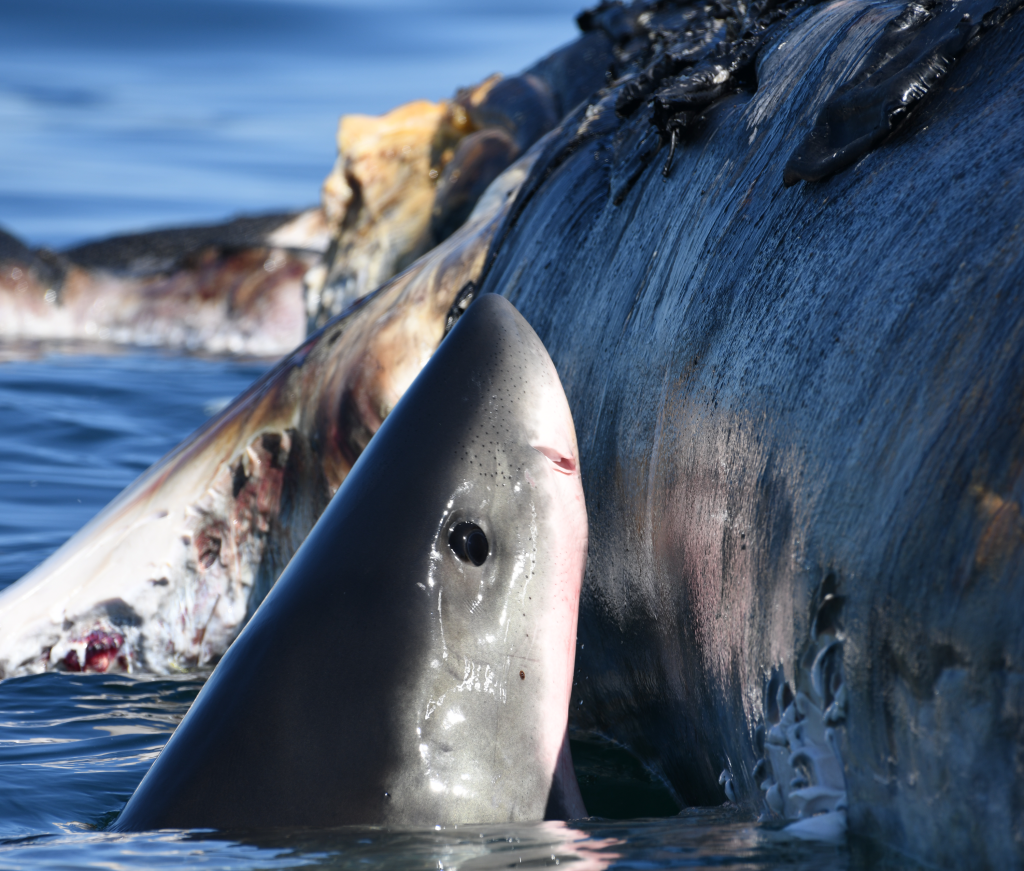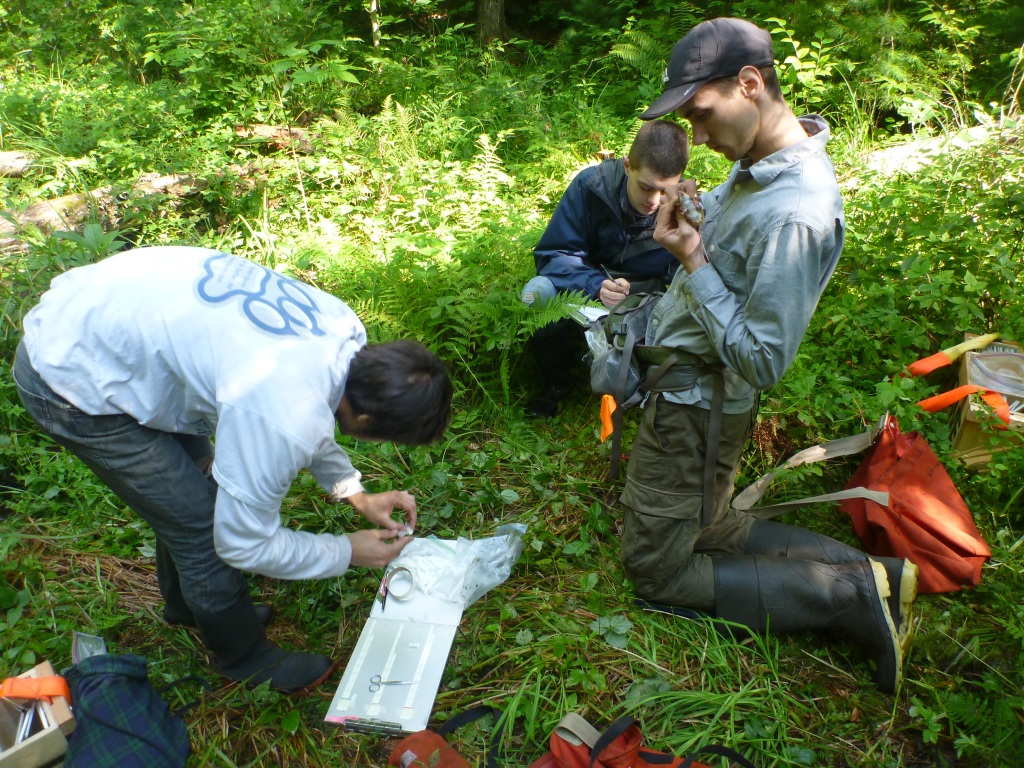In this post, Ryan Stephens, an ecologist at East Tennessee State University, discusses his review paper “Meta-analysis and critical review of trophic discrimination factors (Δ13C and Δ15N): Importance of tissue, trophic level and diet source“. This paper has been shortlisted for Functional Ecology’s 2023 Haldane Prize for Early Career Researchers.
About the Paper
Naturally occurring stable isotopes, especially carbon (13C/12C, expressed as δ13C) and nitrogen (15N/14N, expressed as δ15N), are common tools used to understand what species are eating. Stable isotope analyses assume that “you are what you eat”, meaning that the isotopic composition of an animal’s tissue reflects that of its diet. However, stable isotope values of animal tissues are generally offset from diet, with this difference referred to as a trophic discrimination factor (TDF; Δ13C and Δ15N for carbon and nitrogen, respectively). Most ecological assessments using stable isotopes require TDFs to make accurate assessments of diet and trophic position. Controlled feeding trails have long been considered the ‘gold standard’ for estimating TDF values. Because TDFs have not been estimated for most species, ecologists often use values from similar species or use ‘standard values’ of approximately 1.0‰ for Δ13C and 3.4‰ for Δ15N. However, using TDFs from different species may be problematic if diets vary and ‘standard values’ are likely not universally applicable. Furthermore, TDFs may vary by tissue type, trophic level, and by dietary items and it is important to understand the relative importance of these factors and account for them when selecting the most appropriate TDF value for a study.
Focusing on vertebrates (birds, fish, herptiles, mammals), we conducted a literature review and meta-analysis of carbon and nitrogen TDFs from 279 studies to understand how tissue type, trophic level, and diet source influence variation in Δ13C and Δ15N. We found that vertebrates showed consistent patterns in Δ13C relative to tissue type (due to differences in amino acid composition) and between trophic levels and diet sources (as a result of differences in dietary protein content and metabolic routing). Comparatively, vertebrates showed considerable variation in Δ15N both among tissues and trophic levels, likely due to differences in tissue synthesis and physiological capabilities.

Many of these patterns had been documented in various vertebrate taxa and early on we received feedback that these things were well known and being applied in ecological studies. We decided to investigate to see if researchers were accounting for these factors when selecting TDF values. We reviewed 358 isotopic field studies to determine if researchers accounted for tissue type, trophic level, or diet source during their TDF selection process. We predicted that many of these factors were likely ignored but were surprised to find that despite the importance of diet source on TDF values, most isotope studies did not account for diet when selecting TDF values. Further, the vast majority of fish studies relied on literature review values that failed to account for tissue type, trophic level, and diet source. This suggests that although these factors have long been known to influence TDF values they have not formally been incorporated into the TDF selection process for most ecologists.
Our study provides a much-needed framework for determining the most appropriate TDF values for ecologists to use. Further, using a Bayesian framework, we estimated Δ13C and Δ15N for vertebrates depending on tissue, trophic level, and diet source. These estimates vary greatly and highlight that applying ‘standard values’ of 1‰ (Δ13C) and 3.4‰ (Δ15N) as constants in isotopic ecology should be abandoned. Use of our framework and TDF estimates in isotopic analyses should improve diet and trophic assessments in natural systems, leading to a better understanding of ecological interactions and communities along with more informed conservation and management decisions. Although this paper focuses on vertebrates, I am currently working with colleagues to do a similar study on invertebrates.
As an ecologist, I admit that TDFs were not something I had set out to study. However, during my PhD I had trouble finding TDFs for the small mammal species that I was working with in a temperate forest system in northern New Hampshire. After adjusting small mammal hair samples by TDFs that were available at the time, the values just didn’t make sense relative to the food items that the small mammals were eating.This led to a field study and literature review of TDFs that focused on mammals (Stephens et al., 2022, Ecological Monographs). After finishing this project, I realized that many of the patterns I observed, particularly for Δ13C, were likely broadly generalizable across other vertebrate groups but were largely being overlooked. Despite the tedious nature of this type of literature review, I found that I really enjoyed the process of finding TDF papers – it’s a bit like a treasure hunt. As a side project, I started reviewing TDF literature during my free time. It took me over a year, but I was able to compile the 279 peer-reviewed papers used in this study. My hope is that this paper will be a valuable resource to those looking for the right TDFs for their system and that I can save researchers, especially students, the difficulties and frustrations that I had.

About the author
I am an ecologist interested in the factors that shape a species’ niche and functional role in an ecosystem. Specifically, I study how habitat associations, resource availability, and biotic interactions influence the dietary niche of mammals and their role as dispersers of mycorrhizal fungal spores in forests. As with working on TDFs, this line of research was not exactly a linear path. I first got hooked on small mammals during a field class where we live trapped small mammals when I was an undergraduate student at the University of Wisconsin-Stevens Points (UWSP). This ultimately led to me staying at UWSP to do a masters on small mammal community ecology. I had anticipated that after my masters that I would find a state or federal agency job. However, as I neared the end of my masters, I realized that I really loved asking scientific questions and trying to answer them. After finishing my masters, I started a PhD at University of New Hampshire where I got really excited about diets, stable isotopes, truffles, and fungal spore dispersal. These interests have taken my research in several different directions, and I think it really goes to show that you never know where your interests will lead you.

Recently I joined the faculty in the Department of Biological Sciences at East Tennessee State University. Albeit a busy first year, I’ve really enjoyed building my research program and interacting with students. When I’m not in the office, lab, or field I enjoy spending time with my family, hiking, and going truffling with our 3-year-old.

